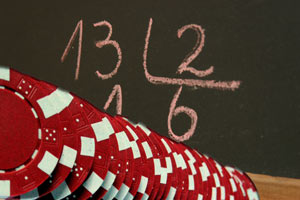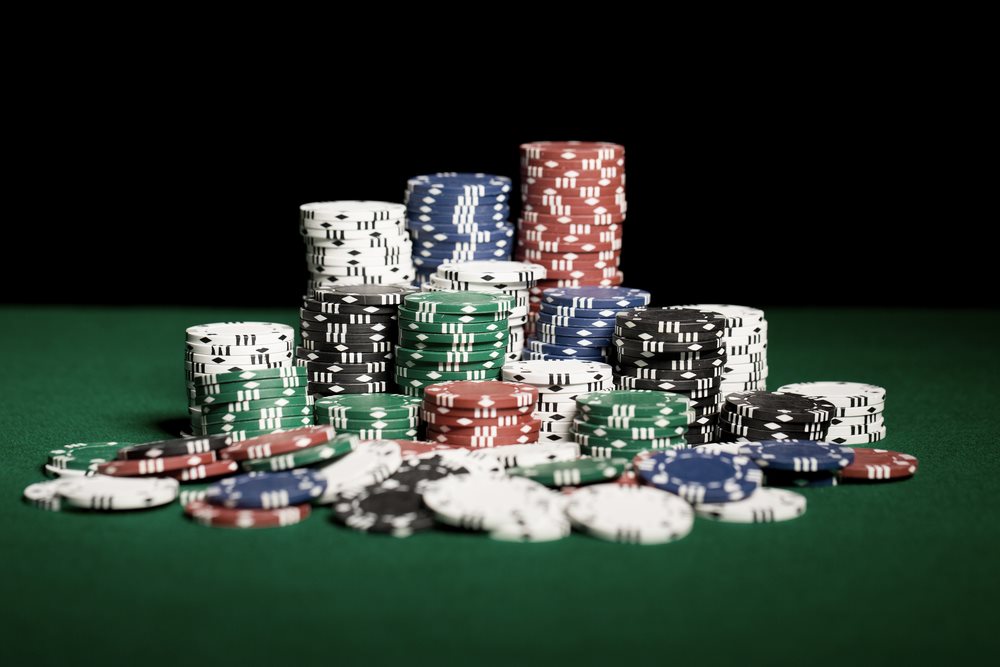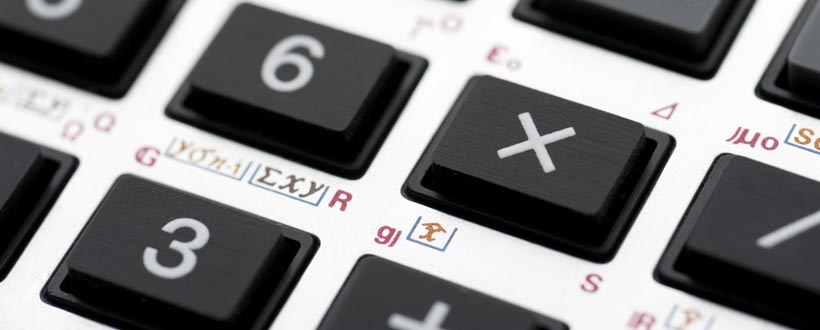What is ICM in Poker? ICM stands for independent chip model. It's a way of assigning a monetary value to our chip stack in a poker tournament. The fundamental idea is here is that doubling our tournament stack doesn't necessarily double our average tournament payout. Samer Khuri: It stands for independent chip model and it is a way of assigning a value of chips at any stage in a tournament. The reason this is even necessary is because chips are not directly. In a poker tournament, the Independent Chip Model (ICM) is a mathematical model that is used to more precisely calculate overall equity in a tournament. Due to chip stack values changing over time as the tournament progresses with the remaining players getting closer to the money, each player must take into account the rewards/risks of any play. The independent chip model assigns $ value to your chip stack in a tournament. How much are 100 chips worth in a tournament? How about 10,000 chips? Well that all depends on a few things.
Understanding the Independent Chip Model (ICM) for SNGs
In poker, the Independent Chip Model (ICM) uses the stack sizes of remaining players and the payout structure to calculate each player's equity in the tournament.
Knowing your equity allows you to assess whether a particular play is +$EV and is a hugely powerful tool when making decisions on the bubble in Sit n Go tournaments. This knowledge can allow you to make some +$EV moves that are not immediately obvious to everyone. This gives you an edge on the competition and will give a healthy boost to your ROI.
Equity calculations using the Independent Chip Model
The definition might sound a little complicated if you haven't heard it before but it's quite simple to understand with the aid of a couple of examples.
Let's first take a look at an example of a bubble situation.
You are in a regular 10 man SnG with a $10 buy-in, 50/30/20 payouts and 1500 starting chips each. You are down to 4 players and by a happy coincidence all players have the same number of chips 3750. We will ignore the effect of the blinds to keep things simple.
It is not hard to work out that the equities for all players here is $25.
The next hand player A and player B get all-in and Player A wins. Now the chip stacks look like this:
Player A - 7500
Player C - 3750

Player D - 3750
This is where ICM gets interesting. The chips that Player B lost were worth more to him than they are to Player A. It sounds counter intuitive, after all player B lost 3750 chips and player A gained 3750 chips, but Player A's equity has gone up by less than Player B's equity went down.
Player B's equity has gone from $25 to $0. This $25 must be split by the remaining players. If Player A's equity went up by $25 to $50 then that would imply he is guaranteed to finish in first place. He certainly has the best chance of finishing in first but the other two players are still in the race and their equities have now increased accordingly.
Using an Independent Chip Model calculator we can see the player equities are as follows:

Player A - $38.33 (+$13.33)
Player C - $30.83 (+$5.83)
Player D - $30.83 (+$5.83)
[An ICM calculator is a piece of software that does ICM equity calculations for us. Getting one will help your game immensely and will pay for itself in no time. SnG Wizard is one of the best around and can be purchased at www.sngwiz.com]
Why is this important?
Poker Independent Chip Model

Let's assume that you are Player A. In the all-in hand between you and Player B, Players C and D fold, Player B shoves and it is up to you to decide whether you should call or not.
You have to risk $25 in equity to win $13.33 in equity. This means your hand needs at least 65.3% equity against the range of hands that Player B shoves.
(25 divided by 25 + 13.33 = 65.3)
By looking at a couple of examples of hand ranges using PokerStove we can see that ICM will allow you to make a superior play here that is not obvious to most players, which will increase your ROI. Texas holdem poker dedomil.
[PokerStove is a free poker tool that allows you to calculate the equities of different hand ranges]
Example 1:
You look down at AJs. It's a decent hand and you know from your previous games with Player B that he will be shoving the top 35% of hands.
AJs has a big edge against this range. Its equity is 61.5% (calculated using PokerStove). 61.5% falls somewhat short of the 65.3% needed for a call to be +$EV though, so even though AJs has an edge over Player B's hand range, the correct play is to fold.
Example 2:
Here we will take an extreme example where you know for a fact that you have the best hand. You again have AJs in spades. Player B shoves and shows you that he has KQs, also in spades. You have the best hand and if this were a cash game you would snap call. However, if you run the equities in PokerStove you can see that your hand has roughly 61.1%, again not enough to make this a profitable call.
The Independent Chip Model and your ROI
So we have shown you how you can use the Independent Chip Model to sometimes profitably fold the best hand. What effect will this play have on your ROI?
Take the numbers from example 1. Our hand has 61.5% equity. Soaring eagle casino suites. How much of a difference will folding make to our ROI versus calling?
If you fold:
You will still have $25 in equity
If you call:
61.5% of the time you will have $38.33 equity = $23.57 on average
38.5% of the time you will have $0 equity
So calling costs you $1.43 in equity on average. This is 14.3% of the $10 buy in! Obviously this exact hand will not come up in every Sit and Go, but every time it does, your knowledge of the Independent Chip Model will make you 14.3% of a buy in. It's not hard to see how this knowledge applied to many situations can add up to a significant edge over your competition.
Time for some fun – Relentless aggression!!!
So far we have shown you that ICM can assist you in making good folds in SNGs, but where's the fun in folding your way to a min-cash all day long? It's time to use the Independent Chip Model to ramp up the aggression.
If you need a very strong hand to call a players shove, then it's also true that if you shove, your opponent needs a very strong hand to call. This opens up a lot of opportunities for you to really pile on the pressure in bubble spots.
Keep in mind our example above. Let's now assume that you are in Player B's spot. It's time to shove all the chips in the middle. Awesome! Let's say that you know player A has AT. We can shove any two cards and Player A does not have the correct odds to call. That's right! A hand as strong as AT has to fold here. AT vs. a random hand has 62.7% equity, so if Player A knows perfect ICM we could even tell him we are shoving any two cards and there's nothing he can do but fold.
Now before you go off and start shoving every hand like some sort of unstoppable monkey, we have made some pretty big assumptions here and there are some very important considerations and adjustments that need to be made.
Additional considerations for the Independent Chip Model
ICM and player type
Each poker player is different and most will not know perfect ICM strategy. Again let's assume your opponent has AT and you are considering whether to shove any two cards. If you know this player is too loose and unaware of ICM then shoving any two cards is likely a big mistake because he will very likely call.

Player D - 3750
This is where ICM gets interesting. The chips that Player B lost were worth more to him than they are to Player A. It sounds counter intuitive, after all player B lost 3750 chips and player A gained 3750 chips, but Player A's equity has gone up by less than Player B's equity went down.
Player B's equity has gone from $25 to $0. This $25 must be split by the remaining players. If Player A's equity went up by $25 to $50 then that would imply he is guaranteed to finish in first place. He certainly has the best chance of finishing in first but the other two players are still in the race and their equities have now increased accordingly.
Using an Independent Chip Model calculator we can see the player equities are as follows:
Player A - $38.33 (+$13.33)
Player C - $30.83 (+$5.83)
Player D - $30.83 (+$5.83)
[An ICM calculator is a piece of software that does ICM equity calculations for us. Getting one will help your game immensely and will pay for itself in no time. SnG Wizard is one of the best around and can be purchased at www.sngwiz.com]
Why is this important?
Poker Independent Chip Model
Let's assume that you are Player A. In the all-in hand between you and Player B, Players C and D fold, Player B shoves and it is up to you to decide whether you should call or not.
You have to risk $25 in equity to win $13.33 in equity. This means your hand needs at least 65.3% equity against the range of hands that Player B shoves.
(25 divided by 25 + 13.33 = 65.3)
By looking at a couple of examples of hand ranges using PokerStove we can see that ICM will allow you to make a superior play here that is not obvious to most players, which will increase your ROI. Texas holdem poker dedomil.
[PokerStove is a free poker tool that allows you to calculate the equities of different hand ranges]
Example 1:
You look down at AJs. It's a decent hand and you know from your previous games with Player B that he will be shoving the top 35% of hands.
AJs has a big edge against this range. Its equity is 61.5% (calculated using PokerStove). 61.5% falls somewhat short of the 65.3% needed for a call to be +$EV though, so even though AJs has an edge over Player B's hand range, the correct play is to fold.
Example 2:
Here we will take an extreme example where you know for a fact that you have the best hand. You again have AJs in spades. Player B shoves and shows you that he has KQs, also in spades. You have the best hand and if this were a cash game you would snap call. However, if you run the equities in PokerStove you can see that your hand has roughly 61.1%, again not enough to make this a profitable call.
The Independent Chip Model and your ROI
So we have shown you how you can use the Independent Chip Model to sometimes profitably fold the best hand. What effect will this play have on your ROI?
Take the numbers from example 1. Our hand has 61.5% equity. Soaring eagle casino suites. How much of a difference will folding make to our ROI versus calling?
If you fold:
You will still have $25 in equity
If you call:
61.5% of the time you will have $38.33 equity = $23.57 on average
38.5% of the time you will have $0 equity
So calling costs you $1.43 in equity on average. This is 14.3% of the $10 buy in! Obviously this exact hand will not come up in every Sit and Go, but every time it does, your knowledge of the Independent Chip Model will make you 14.3% of a buy in. It's not hard to see how this knowledge applied to many situations can add up to a significant edge over your competition.
Time for some fun – Relentless aggression!!!
So far we have shown you that ICM can assist you in making good folds in SNGs, but where's the fun in folding your way to a min-cash all day long? It's time to use the Independent Chip Model to ramp up the aggression.
If you need a very strong hand to call a players shove, then it's also true that if you shove, your opponent needs a very strong hand to call. This opens up a lot of opportunities for you to really pile on the pressure in bubble spots.
Keep in mind our example above. Let's now assume that you are in Player B's spot. It's time to shove all the chips in the middle. Awesome! Let's say that you know player A has AT. We can shove any two cards and Player A does not have the correct odds to call. That's right! A hand as strong as AT has to fold here. AT vs. a random hand has 62.7% equity, so if Player A knows perfect ICM we could even tell him we are shoving any two cards and there's nothing he can do but fold.
Now before you go off and start shoving every hand like some sort of unstoppable monkey, we have made some pretty big assumptions here and there are some very important considerations and adjustments that need to be made.
Additional considerations for the Independent Chip Model
ICM and player type
Each poker player is different and most will not know perfect ICM strategy. Again let's assume your opponent has AT and you are considering whether to shove any two cards. If you know this player is too loose and unaware of ICM then shoving any two cards is likely a big mistake because he will very likely call.
Notice here that your opponent is making a mistake by calling but you need to adjust your strategy to account for his mistake. He is calling with too wide a range, so you need to tighten up your range to account for this or the other opponents in the tournament will be the ones that benefit from his mistake.
[Don't be discouraged if someone makes a play that you know is incorrect and it ends up costing you money. This is a good thing; it means there's money to be made in the future. Just take a note and adjust your range next time.]
ICM and the blinds
ICM does not properly account for the blind positions. For example if the next player in the BB is so short that he will be forced all in next hand then it is quite likely that he will be knocked out in the next hand. You will gain a significant amount of equity by just folding and letting him bust out so you need to tighten up your range in this spot considerably.
ICM and player skill advantage
ICM assumes that all poker players are of equal skill. This is obviously far from the truth. This fact can change some of your marginal decisions. For example if you know you have a big skill advantage over your opponent it may be best to avoid pushing a very small edge now to take advantage of a larger edge later when your opponent makes a larger mistake.
The Independent Chip Model – Avoiding ICM suicide
Poker is a game of mistakes. Put simply, if you make fewer mistakes than your opponent, you make money. Opponents who do not utilise ICM while playing SNGs will often commit ICM suicide. That is to say they will get into spots where they put their tournament life at risk with only a marginal advantage or even a disadvantage. Your study of ICM spots will mean you avoid committing ICM suicide while your opponents go at it again and again, handing you equity in the process.
The Independent Chip Model – You know the basics, what now?
We have only discussed some of the situations where ICM is useful in this article. To use the Independent Chip Model to its full potential it will require a little work on your part. This work is best done using an ICM calculator such as SnG Wizard which also includes a quiz feature. This feature is extremely helpful in putting your ICM knowledge to the test before hitting the tables.
Independent Chip Model Poker
This work will make you a much better poker player and greatly increase your ROI in Sit n Gos. Once you master ICM, most situations will become second nature to you and you will crush your opponents with ease.